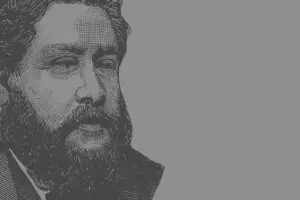Context: In chapter 4, Jesus told parables about the kingdom. It will certainly grow through the seemingly weak means of proclamation. When so many hear, seem to believe, and yet fall away, how do some persevere and produce fruit? (4:20). Though its beginnings may seem fortuitous and it’s taking root and growing is mysterious, it will become large and at its final fruition the end will come. If they wondered how this would be accomplished, they should have no doubt by the time the next series of events happens. Jesus showed his power over nature by speaking to a terrible storm and making it cease; in chapter five he healed a demoniac by casting out of him a legion of demons (from 3,000 to 12,000) to foreshadow his defeat of principalities and powers and everything that exalts itself against God and his purpose. Then he healed an incurable disease to show that by his wisdom and power he does that which is impossible with man. Then he gave life to a dead girl to show that not even the final enemy, death itself, can alter the purpose of God or hinder the effectual operation of his redemptive grace. Chapters 4 and 5 give the historical illustration of the theological conclusion proposed by Paul in Philippians 3:20, 21: “For our citizenship is in heaven, from which we also eagerly wait for the Saviour, the Lord Jesus Christ, who will transform our lowly body that it may be conformed to His glorious body, according to the working by which He is able even to subdue all things to Himself.” Jesus who suffered death now is crowned with glory and honor in order to bring many sons to glory” (Hebrews 2:9, 10). The all-conquering one will assure that none of his people perishes but that the sown word will be effectual to draw them as obedient servants and members of his kingdom.
I. A worshiper from an unlikely source made a request. One crowd asked Jesus to leave (5:17) because of his work of defeating evil; just across the lake, another crowd welcomed him with enthusiasm (5:21). He is asked to leave the country where he did a miracle of startling power and amazing compassion. Jesus left one evangelist, the man who formerly was demon-possessed, to tell what great things the Lord had done for him.
A. A Synagogue official, that is, the ruler of one of the synagogues in Capernaum, came to Jesus and bowed before him. (5:22)
- Others of his prestige and importance within the Jewish religious system did not respond with such devotion, submission and humility to Jesus. Already many were conspiring to destroy him (2:6, 7; 3:6). Luke 13:13-15 records an event and the words of a synagogue ruler who reprimanded Jesus for an act of healing. Jesus responded by calling him a hypocrite and illustrating the substance of his hypocrisy.
- His demeanor showed that he not only was desperate but had full confidence that Jesus was his only hope for the well-being of his daughter. If Jesus could still a storm, defeat the demons, he could heal his daughter.
B. He made a very urgent request, with great earnestness. Perhaps he had seen, certainly he had heard about, the healings that Jesus had done. He seems to have concluded that Jesus was no blasphemer (2:7), nor satanic instigator (3: 22), nor crazed (3:21), nor an imposter, but had come as Messiah. Jesus understood and revealed the secrets of the kingdom (4:22) and displayed its power. The lame walked, the blind saw, lepers were made whole, demons were routed from strong holds. The gospel was preached to the poor.
- His daughter was at death’s door. What Jesus had done for others upon their believing, Jairus implored Jesus to do for his daughter. It was no light thing he asked, but something mighty—to draw her back from the hungry grave of death–Sheol was not yet satisfied. But the Psalms declare that the Lord delivers one’s soul from the depths of Sheol (Psalm 56:13; 87:13; 116:8). This request was a confession that in Jesus he saw the Lord of hosts.
- He asked Jesus to lay his hands on her. Elisha had raised a boy from the dead by touch in 2 Kings 4:322ff. Jesus also healed by touch in Mark 6:5, 7:32, and 8:23-25, Matthew 8:3 and also through others touching him (8:56). Touch was not always necessary, for Jesus also healed simply by his word (7:29, 30; 10:52 and Matthew 8:5-13). Both word and touch were used (9:25-27). IN the same way God created by his word alone and also used matter from which he molded a man (dirt) and a woman (flesh).
- He believed that if Jesus would do this, she would live. As opposed to what he experienced later in Nazareth where he healed only a few because of their unbelief (Mark 6:6), this man had full faith that no condition was beyond the power and compassion of Jesus. Hebrews 11:6 describes the mind and actions of this Jairus: “He that would come to God must believe that he is and that he is a rewarder of those who diligently seek him.”
II. A sufferer from a place without hope made a faithful move.
A. She made her way through the crowd in spite of such difficulty. A crowd was “pressing on him.” (24). Others also had come to Jesus though the way was difficult (2:4) The son of Timaeus, a blind man overcame opposition to get to Jesus for healing (10:46-52). Mark puts forth these events to enforce the idea of faith as a divinely-incited perseverance and resolve that invades the human soul to press out opposition from within and without. One must find the healing and saving power of Jesus in spite of all resistance.
B. She was in a desperate condition. Her very fluid of life was continually seeping from her, probably with only a slightly greater rate than her body was reproducing it. Life had been gradually declining for years. All remedies of all the doctors she could find were fruitless in stopping the bleeding. She had no promise of improved health, but death crept closer and closer. She had spent all her money with vain remedies and now was penniless as well as healthless.
C. She found an opening for her hand in the press of the crowd to reach the hem of Jesus’s robe and she touched it with a reasoned hope of finding restored life—that she might be healed. She had singled Jesus out as the only one through imminent death could be conquered. Perhaps she realized that bleeding would take her to the grave, and sin would carry her even lower than the grave. Jesus was the answer to both.
D. Her issue of blood dried up immediately. As she had believed and had thought within herself, Jesus was the only source of life. Coming to him stopped her flow of death and restored her health. “She felt in her body that she was healed of her affliction and suffering” (29). When we have found all else to fail in our quest for forgiveness and eternal life, when the law has shown its condemning power and that it will take us down to death and hell under its righteous curse, we find a hope and a way of spiritual health and righteousness in Christ alone. Our money is spent, our clothes are but filthy rags, but even in the hem of his garment is righteousness sufficient to cover our sins and clothe us with righteousness.
E. Even as Jesus saw that the paralytic and his friends had faith to be restored (2:5), so he knew that one of his sheep—a sheep he had come to find—had come to him in saving faith and his power had healed her. The particularity of that touch as an extension of true faith Jesus knew immediately, so he asked for an immediate and personal identification. The disciples thought the question, “Who touched my clothes?” peculiar, perhaps laughably strange, in light of the press of the crowd around him, but he knew the difference in mere natural closeness and true spiritual quest. He knew how the kingdom grows, and how, though it seems so unlikely, faith overcomes all the natural objections and difficulties that always press against it. His power gives life and fuels the mysterious advance of the sowed word.
F. When she identified herself, Jesus isolated faith as that which unites a person with his saving power. The word translated healed also means saved. Jesus used it in verse 34, “Your faith has saved/healed you,” and in 10:52 when the blind son of Timaeus found sight, “Your faith has saved/healed you.” He also used another word, strange in this context if all he referred to was the physical reality: “Go in peace.” She was to be released from suffering of body and suffering of guilt. In his commentary on Mark, James Brooks wrote, “Physical healing is a parable of spiritual deliverance.”
III. A girl who died is given new life (verses 35-43). Men, perhaps servants, from the house of Jairus came, as Jesus uttered his last words of consolation to the woman, with the news that his daughter was now dead. While Jairus was absorbing what he had just seen and heard, his servants bring news of death with the suggestion that he not “bother the teacher any longer.” If he had confidence in Jesus before this event, can one imagine how high his hopes and confidence were now.
A. Detecting unbelief, perhaps even cynicism, in the words of the men, Jesus ignored them. To Jairus, however, he called him back to the faith he had just commended in the healed woman. “Do not be fearing; let faith alone rule your spirit in this moment. If you believed before that I could heal her, now that I speak to you and am myself undisturbed by this bit of news, maintain your trust in my power as well as my mercy and willingness to engage and overcome even this last advantage of sin over the human body.”
B. Diminishing the crowd to Peter, James, and John along with Jairus, Jesus went to the home and found wailers and criers, who were not so overcome as to be unable to laugh snidely at Jesus. These probably were professional mourners who had been put on notice when the girl seemed so sick, and had immediately begun their duties when the synagogue men told them, “It’s over; she is dead.” When Jesus arrived, therefore, they were at their business and scoffed when Jesus questioned the legitimacy of their work. “Why all this commotion and weeping and wailing.” Sorrow at the death and loss of a loved one is entirely legitimate from a biblical standpoint, but the histrionics of paid remorse are out of accord with both natural affection and a deep sense of divine sovereignty. The resurrection of Christ altered our understanding of death and its sequel for ever (see John 11:21-27; Romans 8:37-39; 1 Corinthians 15:52-58; 1 Thessalonians 4:13-18).
C. When Jesus said, “The child has not died but is asleep,” he was not using a mere euphemism. But when it raised a laugh, Jesus excluded them from seeing the astonishing gift of life. Only the father and mother and the three disciples entered the room. Though the mockers missed it, Jesus gave a clearer revelation of the reality of death than had hitherto been given. It continued to unfold in the New Testament after the resurrection of Jesus. In this short statement, Jesus said, her body is sleeping, but her consciousness is intact. As Jesus joined soul to body at the creation (Genesis 2:7), so he does in the resurrection; in temporary resuscitation, Jesus anticipates the resurrection but without the glorification of the body. In John 11, Lazarus had been dead for four days, but by Jesus’ words, “Lazarus, come forth,” the personal spirit of life and self-consciousness re-entered his body and he came forth. Even so, he called forth the same for this twelve-year old girl: “Little girl, I say to you, get up.” When Jesus raised up the young son of a widow, he touched the open coffin and said, “Young man, I say to you, arise” (Luke 7:14). The words of Jesus impart life. Eternal life is his promise to believers now; incorruptible life in glorified bodies will come at the resurrection when “the Lord himself will descend from heaven with a shout.” If these words foreshadow the call to resurrection, we may speculate that the shout will include a command to our bodies to “Get up, arise, and come forth!”
D. She got up and began to walk. Her walking showed that now her conscious life was vitally connected with her body. To reinforce this, that a true granting of life to a spiritless body, a rejoining of body and soul had occurred, he told them to give her something to eat. After his resurrection, Jesus prepared and ate a breakfast of bread and fish with his disciples (John 21:10-15).
E. If the disciples had eyes to see and ears to hear, now they knew that nothing would hinder the coming of the kingdom; the preached word to which Jesus would commission them would be blessed with his all-sufficient power over evil and all the forces that brought about death. By his own power Jesus will accomplish his purpose.





















